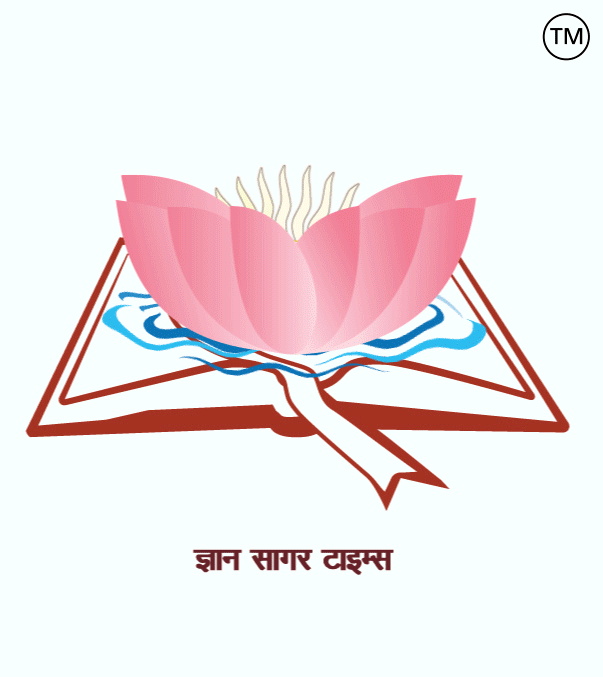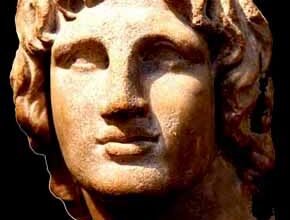
|
1. Alexander was the ruler of Macedon in Greece and his father’s name was Philip II. 2. Alexander had the ambition of world conquest, to realize this ambition, he attacked India in 326-27 BC. I invaded India. 3. At the time of Alexander’s invasion, northwestern India was divided into many small states, of which some were monarchical and some were republics. 4. This war has also been called the ‘War of Hydespace’. Porus was defeated in this war, but Alexander, impressed by Porus’s bravery, returned to his kingdom. 5. The most important battle of Alexander in India took place on the banks of river Jhelum with Puru or Porus, which is called the battle of Pistasta. 6. In India, Alexander first encountered the ruler of Taxila, Ambhi. Ambhi soon surrendered and promised to help Alexander. 7. After the defeat of Porus, Alexander defeated ‘Galaganikay’ and some castes also. 8. Alexander established two cities in India. The first city was named ‘Nikaiah’ (Victory Nagar) to commemorate the victory and the second one was named Bookfella after his favourite horse. 9. While returning to his homeland of Macedonia, about 323 BC. Alexander died in Babylon in AD. 10. In the face of the stubbornness of the soldiers, Alexander finally had to stop his campaign of conquest of India 11. Alexander decided to return the conquered Indian territories to his general Philip. Alexander stayed in India for 19 months. 12. It is said that the constant wars Alexander, the memory of the family, the hot climate of India, etc. destroyed the spirits of his army. 13. Alexander wanted to attack the mighty Magadha Empire of India. But when her army heard about Magadha’s huge army, she got nervous. 14. Magadha was a powerful kingdom at the time of Alexander’s invasion of India, which was ruled by a king named Ghanananda. There were about 6 lakh soldiers in Ghananand’s army. 15. Alexander’s army refused to advance beyond the Vyas River. Alexander tried his best to fill the spirits of the soldiers, but he did not succeed in this work. 16. Alexander’s ambition to conquer the world inspired him to conquer India. This inspiration or Alexander’s India campaign provided an opportunity for ancient Europe to come into close contact with ancient India. 17. The most important result of Alexander’s India campaign was the establishment of direct contact between India and Greece in various areas. 18. The small princely states of India came to an end as a result of Alexander’s invasion. 19. According to Dr Radha Kumud Mukherjee, Alexander’s invasion of India encouraged political integration, which led to the merger of smaller states into larger states. 20. The development of the Gandhara style in India is the result of Greek influence in the field of art. 21. In the field of trade, water routes were found with the countries of the West, which had a favourable effect on trade over time. 22. The influence of the printing art of the Greeks is visible in the Indian currency art. Uluk-style coins are examples of this. ========= ============ =========== =========-==== इतिहास से संबंधित-166 मध्यकालीन भारतीय इतिहास..
1. सिकंदर यूनान के मेसिडोनिया का शासक था और उसके पिता का नाम फिलिप द्वितीय था. 2. सिकंदर विश्वविजय की महत्वाकांक्षा रखता था अपनी इस महत्वाकांक्षा को साकार करने के लिए उसने भारत पर 326-27 ई.पू. में भारत पर आक्रमण किया. 3. सिकंदर के आक्रमण के समय पश्चिमोत्तर भारत अनेक छोटे छोटे राज्योँ मेँ विभक्त था, जिसमे कुछ कुछ राजतंत्रात्मक तथा कुछ गणराज्य थे. 4. इस युद्ध को ‘हाइडेस्पेस का युद्ध’ भी कहा गया है. इस युद्ध में पोरस की हार हुई, लेकिन सिकंदर ने पोरस की बहादुरी से प्रभावित होकर उसका राज्य वापस कर दिया. 5. सिकंदर का भारत मेँ सर्वाधिक महत्वपूर्ण युद्ध झेलम नदी के तट पर पुरु या पोरस के साथ हुआ जिसे पितस्ता का युद्ध कहा जाता है. 6. भारत मेँ सर्वप्रथम सिकंदर का सामना तक्षशिला के शासक अम्भी से हुआ. अम्भी ने शीघ्र ही समर्पण कर दिया और सिकंदर को सहायता का वचन दिया. 7. पोरस की हार के बाद सिकंदर ने ‘गलॅागनिकाय’ तथा कुछ जातियो को भी पराजित किया. 8. सिकंदर ने भारत मेँ दो नगरो की स्थापना की. पहला नगर ‘निकैया’ (विजय नगर) विजय प्राप्त करने के उपलक्ष्य मेँ तथा दूसरा अपने प्रिय घोड़े के नाम पर बुकफेला रखा. 9. अपने देश मेसिडोनिया लौटते समय लगभग 323 ई.पू. में बेबीलोन में सिकंदर का निधन हो गया. 10. सैनिकों के हठ के सामने सिकंदर अंततः सिकंदर को अपने भारत विजय के अभियान को रोकना पड़ा 11. सिकंदर ने विजित भारतीय प्रदेशोँ को अपने सेनापति फिलिप को सौंप कर वापस लौटने का निर्णय किया. सिकंदर भारत मेँ 19 महीने रहा. 12. कहा जाता है की सिकंदर के लगातार युद्धों, घर परिवार की याद, भारत की गर्म जलवायु आदि ने उसकी सेना के हौसले पस्त कर दिए. 13. सिकंदर भारत के शक्तिशाली मगध साम्राज्य पर आक्रमण करना चाहता था. लेकिन जब उसकी सेना ने मगध की विशाल सेना के बारे मेँ सुना तो वह घबरा उठी. 14. सिकंदर ने भारत के आक्रमण के समय मगध एक शक्तिशाली राज्य था, जिस पर घनानंद नामक राजा का शासन था. घनानंद की सेना मेँ लगभग 6 लाख सैनिक थे. 15. सिकंदर की सेना ने व्यास नदी से आगे बढने से इंकार कर दिया. सिकंदर ने सैनिकोँ मेँ जोश भरने का पूरा प्रयत्न किया किन्तु उसे इस कार्य में सफलता नहीँ मिली. 16. सिकंदर की विश्व विजय की महत्वाकांक्षा ने उसे भारत विजय के लिए प्रेरित किय.। इस प्रेरणा अथवा सिकंदर के भारत अभियान ने प्राचीन यूरोप को, प्राचीन भारत के निकट संपर्क मेँ आने का अवसर प्रदान किया. 17. सिकंदर के इस भारत अभियान का सबसे महत्वपूर्ण परिणाम था- भारत और यूनान के बीच विभिन्न क्षेत्रों मेँ प्रत्यक्ष संपर्क की स्थापना की. 18. सिकंदर के आक्रमण के परिणामस्वरूप भारत की छोटी छोटी रियासतें समाप्त हो गईं. 19. डॉ० राधा कुमुद मुखर्जी के अनुसार सिकंदर के भारत पर आक्रमण से राजनीतिक एकीकरण को प्रोत्साहन मिला, जिससे छोटे राज्य बड़े राज्यों में विलीन हो गए. 20. कला के क्षेत्र में गांधार शैली का भारत मेँ विकास यूनानी प्रभाव का ही परिणाम है. 21. व्यापार के क्षेत्र मेँ पश्चिम के देशो के साथ जल मार्गों का पता चला, जिनका कालांतर में व्यापार पर अनुकूल प्रभाव पड़ा. 22. यूनानियों की मुद्रण निर्माण कला का प्रभाव भारतीय मुद्रा कला पर दृष्टिगत होता है. उलूक शैली के सिक्के इसके उदाहरण हैं.
|






